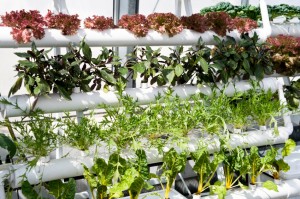 There is a lot of talk these days about “natural” “whole” foods and “sustainable” “green” businesses. Eating local and thinking global has become trendy, but these are also important concepts if we hope to make healthy choices for ourselves and our planet.
There is a lot of talk these days about “natural” “whole” foods and “sustainable” “green” businesses. Eating local and thinking global has become trendy, but these are also important concepts if we hope to make healthy choices for ourselves and our planet.
Putting all these thoughts together may seem daunting, but over the last 30 or so years, the U.S. and many others around the world have been figuring out how to grow natural, whole foods in sustainable, green businesses, instead of in factory farms that pollute the environment, abuse animals and provide low quality products for us consumers. Unlike the widespread popularity of farmer’s markets, an increased selection of organic foods in many markets and other more obvious changes in the way we eat, this has been a very quiet kind of movement, until now. Recirculating farming is slowly becoming more mainstream, and people from all around are getting involved.
So what’s a recirculating farm? We get that question a lot. A very simple definition is a farm that uses water rather than soil as a basis to grow food. So for example, picture all sorts of plants — flowers, herbs, vegetables, fruits and more, floating on rafts in ponds or growing in cascading hanging baskets. (Want to see? Check out our photo gallery. The farms may be indoors, like in a greenhouse or other structure, or outside, depending on the climate. Their main feature is that the water is cleaned and recycled, then continuously circulated throughout the farm.
This may sound like a very complicated process that uses a lot of energy and water, but in fact these farms are fairly simple and inexpensive to build, and are very energy, space and importantly, water efficient (check out our fact sheet on water usage in recirculating farms). They can have low or even no waste output. This all makes it possible to locate a recirculating farm almost anywhere — in particular in the communities that will use the products, providing truly local food (oh and let’s not forget about the jobs that can be created when new farms are built!). When communities grow their own food, the amount of fuel used to transport food can be reduced — a major plus given the current concerns with carbon emissions and global warming.
There are various types of recirculating farms — some grow just plants (called “hydroponics”), others grow fish (known as on-land “aquaculture”) and many grow both plants and fish together (dubbed “aquaponics” — a combination of hydroponics and aquaculture). Want to learn more? Click here for various reports and fact sheets on recirculating farms.
So the next time you are in a farmer’s market or at a grocery store — ask if any of the products came from recirculating farms and give them a try. Or better yet — go visit a farm near you and check it all out in person. You’ll be amazed at this eco-friendly approach to growing food.
If you do visit a farm — please let us know. We are building a map showing recirculating farms in the U.S. to make them and their products easier to find. We’d love to add one you’ve found to the map.
Thanks and eat well!
Marianne

